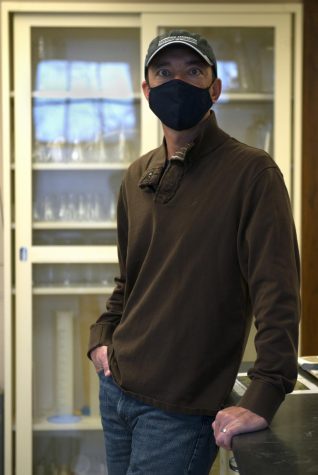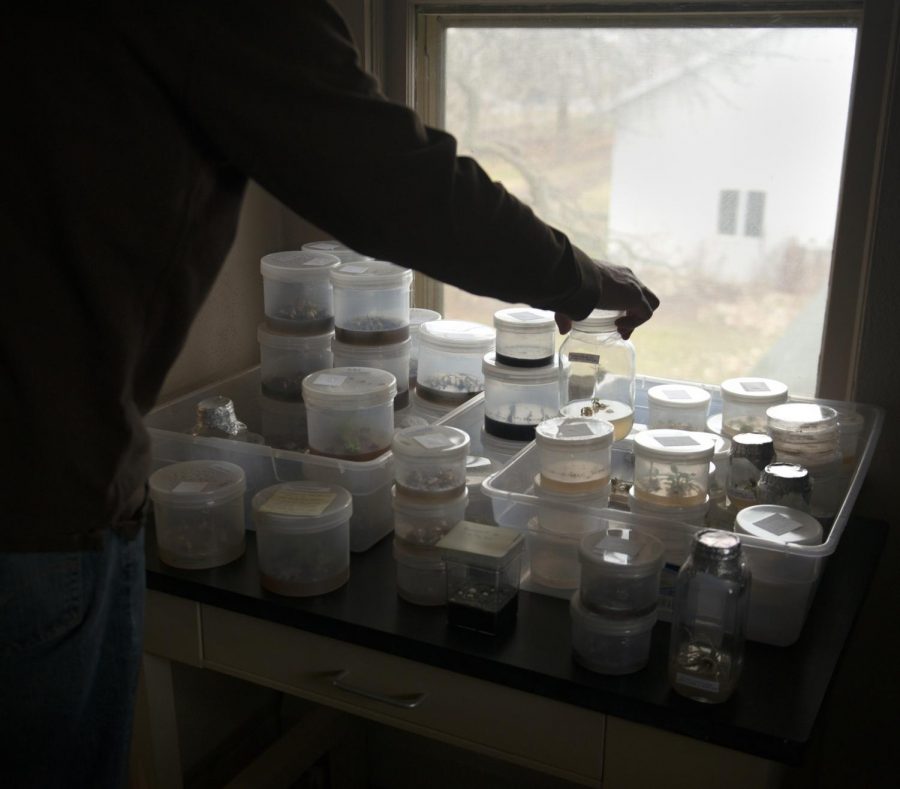David Remucal is one of the few “plant rescuers” in the state.
Collecting, breeding and salvaging endangered plants around Minnesota and Wisconsin, the University of Minnesota adjunct professor’s role at the Minnesota Landscape Arboretum is multifaceted. A plant ecologist by training, Remucal’s work now is in protecting some of the most endangered plants in the Upper Midwest.

“Rare plant rescues haven’t really been a thing in Minnesota,” he said. “And so we’re trying to change that.”
In 2013, Remucal founded the Plant Conservation Program at the Arboretum. Fielding calls from the Minnesota and Wisconsin Departments of Natural Resources (DNR), as well as concerned citizens and other municipal governments, his team is called to salvage threatened and endangered plants from various sites around the states. They then collect and save seeds or whole plants at the Arboretum to keep their genetic material alive in case the plants go extinct in the wild.
Because most of Minnesota’s natural landscape has been altered by humans, Remucal said he feels a sense of responsibility to conserve species that are now at risk of extinction.
“Whether a species is rare or not, there’s no reason why it isn’t as valuable as anything else out there,” Remucal said. “If it’s going away, we should try to save it if we can. And that is especially true for anything that we had a hand in causing its rareness.”
Each rescue requires paperwork and permits from the state’s DNR before the rescue. After the plants are transplanted to a different location, Remucal’s team monitors them for several years, Remucal said. Many of the plants they rescue come from construction sites where the plants would have been either dug up or destroyed.
By law, when developers encounter threatened or endangered species on the land they are intending to build on, they must either stop or modify their development or offset the impact of their operation. Offsetting their impact can mean hiring biologists to do survey work for the species or paying a mitigation fee to the state’s DNR for conservation work, said Bridget Henning-Randa, the endangered species consultant for the Minnesota DNR.
The mitigation fee is used to offset the impact of destroying threatened or endangered species and can sometimes be more than $100,000.
“We’re aiming to sort of intercept that gap where plants have been allowed to be taken … and then work with the landowner to actually remove the plants before they’re destroyed,” said Amanda Weise, a plant conservation associate who works with Remucal in the program.
In the past, the team, along with a group of volunteers, has successfully salvaged two species, the lance-leaf violet and a rare species of blackberry. When Weise gets a lead about an endangered plant on a parcel of land, she said finding it is like going on a “Pokémon hunt.”
On Nov. 7 and 8, Remucal’s team started a new project with ball cactuses in a quarry on the western side of the state. Rounded with a spherical cluster of long white spines, the ball cactus is more common in the western parts of the country but peeks into a small area of Minnesota, Remucal said.
Mining has threatened this cactus’s habitat, and because the plant is so fragile, it is tricky to move it, Remucal said. Part of this ongoing project will be to survey and transplant the cactuses over the next couple of years, collect and bank their seeds, monitor their growth and grow new plants from those seeds.
Because much of Minnesota’s native flora has yet to be identified, it is hard to study them, said Jason Husveth, a restoration ecologist who sometimes partners with Remucal and his team.
Husveth said their conservation work is essential, especially when the state is losing so many of its ecosystems and endangered species to development and climate change.
“At some point there’s going to be a tipping point, if we haven’t reached that tipping point, where there’s a cascade effect,” he said. “Each one of these organisms or species is an important part of the system. And we can’t afford to lose, really, any of them.”
Remucal said his vision is to have an endangered species garden at the Arboretum so people can see all of the variety of plants the state is about to lose. This will hopefully get people emotionally invested in their conservation efforts and encourage financial and legislative support for this cause, he said.
“When we talk to the general public, they’re less aware or unaware of what’s being lost on a daily basis,” Husveth said. “It’s both somewhat discouraging and then really feels like a great sense of purpose, like, ‘Wow, you know, we are conscious of this, and if we don’t do it nobody will.'”




















Jason Husveth
Dec 8, 2020 at 1:05 pm
Jill. Contact me and I will connect you to the right people. Thank you for your interest! Jason Jhusveth@ccesinc.com
Jill Wagner
Nov 11, 2020 at 12:26 pm
How does one volunteer?